|
Discover expert tips on how to pack a bed frame and mattress for moving, ensuring safe transport and easy reassembly. Moving to a new home is an adventure, a fresh start that often comes with the challenge of transporting your belongings safely, especially bulky items like your bed. Among these, the bed frame and mattress are particularly cumbersome yet crucial to move with care. A systematic approach is essential to effectively pack a bed frame and mattress for moving. This comprehensive guide will provide detailed steps to ensure everything is moved without damage, ensuring you can have a good night’s sleep in your new home. Pack a Bed Frame and Mattress for Moving: Get the Necessary Materials If you want to properly pack a bed frame and mattress for moving, it’s important to have the right materials on hand. A durable mattress bag or cover is a must-have to shield it from dirt, moisture, and damage. For the bed frame, bubble wrap or moving blankets offer excellent protection against scratches and dents. Packing tape and scissors are essential for securing these wrappings, and a toolset is necessary for disassembling your bed frame. Lastly, a marker is useful for labeling parts, which simplifies reassembly. Investing time in gathering these materials will make your packing process efficient and stress-free. Packing the Mattress Cleaning the Mattress A clean start in your new home begins with a clean mattress. Start by vacuuming thoroughly to remove dust, hair, and other debris. Use a mild detergent and a damp cloth for spot cleaning if there are any stains. Be careful not to soak the mattress, as moisture can lead to mold and mildew. Allow it to air dry completely, which might take a few hours. A clean and dry mattress ensures that when you unpack, you're greeted with a fresh, welcoming bed to rest on after a long day of moving. Wrapping the Mattress Once it is clean and dry, it's time to wrap it for protection. A specialized mattress bag or cover is designed to offer a barrier against dirt, dust, and moisture during transport. Slide the mattress into the bag and seal the open end with packing tape. Make sure the entire thing is enclosed and the bag is secured with no gaps. Clearly label the package with your name and the destination room in your new home. This protects your mattress and simplifies the relocation process, ensuring the movers know exactly where to place it. Disassembling the Bed Frame Step-by-Step Guide The bed frame, often the centerpiece of your bedroom, requires careful disassembly. Start by removing all bedding and the mattress. Then, systematically take apart the frame. Begin with larger components like the headboard and footboard, then continue to the slats and side rails. Use the appropriate tools to loosen and remove screws and bolts. Keep a close eye on all the hardware - losing a single screw can be troublesome during reassembly. A handy tip is to use small plastic bags to store screws and label them according to the part they belong to. Tips for Easy Reassembly Take detailed photos of everything before and during disassembly to facilitate reassembly in your new home. These photos can serve as a reference, making it easier to put everything back together correctly. Labeling each part of the frame can also be immensely helpful. Use stickers or masking tape to mark each piece, corresponding to the photos you've taken. This simple step can save you a lot of time and confusion, ensuring you can quickly get some sleep and rest after a long day of moving. Pack the Bed Frame Protecting Components The bed frame, with its different components, needs to be packed securely to avoid damage. Wrap each part of the frame with bubble wrap or moving blankets. These materials provide cushioning and protect against scratches, dents, and other damages during transit. Pay special attention to corners and protruding parts, as they are more susceptible to damage. Secure the wrapping with packing tape. If you have any loose parts like knobs or decorative elements, remove them and pack them separately to prevent loss or damage. Compact Packing Strategies When packing the disassembled bed frame, it's important to be mindful of space. Arrange the parts in a way that they take up the least amount of space possible without compromising their safety. Larger parts like headboards and footboards can be laid flat, while smaller pieces can be nestled in between. Ensure that all parts are securely wrapped and don’t move around. This careful packing saves space in the moving truck and minimizes the risk of damage during the move. Pack the Bed Frame and Mattress for Moving: Loading and Transporting Loading Tips Putting your mattress and bed frame into the moving truck requires strategy and careful planning, especially if your move is more complex, like a move across the border. For instance, when moving internationally, ensuring that your items are well-protected and securely placed becomes even more crucial due to the longer transit times and additional handling. The mattress should be placed flat against one of the truck's walls to save space and prevent it from bending or folding, which can damage its structure. Similarly, the frame parts should be carefully positioned to avoid shifting during the journey. Using moving straps or ropes to secure them in place is wise, as this ensures that your bed remains stationary and safe, no matter the distance or destination of your move. Unloading and Storage Upon arriving at your new home, unload everything carefully. Store them in a dry, clean area if they can't be reassembled immediately. Also, avoid placing heavy items on top of the mattress, as this can cause permanent damage. Keep the bed frame parts together to ensure easy access for reassembly. Proper unloading and storage are crucial in preserving the condition of your bed until it's ready to be set up in your new space. Conclusion
Moving your bed frame and mattress can be smooth and stress-free with the right preparation and care. This guide on how to pack a bed frame and mattress for moving has walked you through each step to ensure everything arrives in perfect condition, whether you are moving internationally or locally. Each stage protects these essential items, from gathering materials to the final setup. With patience and organization, you'll find that this task can be a simple and straightforward part of relocating to your new home. Photos via: Pexels Pexels Unsplash Unsplash If you're thinking about renovating your home, there are a few things you should know before you get started. From understanding the different types of renovations to budgeting for your project, this guide from Clark Real Estate will give you an overview of what to expect when it comes to renovating your home.
Different Types of Home Renovations There are many different types of home renovations, from small cosmetic updates to major structural overhauls. Some common home renovation projects include:
Establishing a Timeline and Schedule Once you've decided on the scope of your project, it's time to establish a timeline and schedule. This will help you stay on track and ensure that your project is completed on time and within budget.Some factors to consider when creating your timeline and schedule include:
Budgeting for Your Renovation Next, you'll need to create a budget for your renovation. This will help you keep track of all the costs associated with your project and ensure that you don't go over budget. When budgeting for your renovation, be sure to factor in the cost of the following:
Software Used by Contractors These Days Contractors today use a variety of software applications to manage their projects, including project management software, accounting software, and CAD (computer-aided design) software. Certain specializations also have their own specialized software. All in all, by understanding which software applications your contractor is using, you can better communicate with them and stay up-to-date on the progress of your renovation. How to Find Capable, Trustworthy Contractors Once you've established a budget and timeline for your project, it's time to find capable, trustworthy contractors who can get the job done right. Here are some tips for finding reputable contractors:
Clearly Communicating Your Ideas One of the most important aspects of any home renovation is clear communication between you and your contractor. After all, they're the ones who will be responsible for bringing your vision to life! Make sure you take the time to sit down with them and clearly explain what it is you're looking for before work gets underway. Putting your ideas in writing is advisable, as well. If you like, you can start in Word, then save the files as PDFs so that they can be easily accessed on different devices. If you want to join various PDFs together, you can do so in seconds by selecting a PDF merger tool that you can use for free. Getting Permits Depending on the type and scope of your renovation, you may need to obtain certain building permits before work can begin. Your contractor should be able to advise you on which permits are required for your project. Adding a Home Office With more and more people working from home these days, it's no surprise that many homeowners are looking to add a dedicated home office space as part of their renovation plans. If this is something you're considering for your own home, be sure to factor in the cost of additional electrical outlets, internet hookups, and any other special features that may be required. The Benefits of a Home Warranty Finally, one last thing to consider when renovating your home is whether or not to purchase a home warranty. This type of insurance protects against unexpected repairs or replacements that may be needed after the completion of your renovation project. While not required, a home warranty can give you peace of mind knowing that your investment is protected. Now that you know more about what to expect when renovating your home, it's time to start planning YOUR dream renovation! Just remember: careful planning, clear communication, and staying within budget are key to ensuring that your project goes off without a hitch! Clark Real Estate offers a variety of property management services for landlords and tenants alike. If you have any questions, please let us know. Image via Pexels Flipping houses can be a great way for aspiring students to earn money for college. With a little hard work and a bit of luck, one can turn a profit from buying an inexpensive fixer-upper and selling it at market value. Investing in the real estate market requires careful research and savvy knowledge of the industry, but with dedication and persistence, flipping houses can become a lucrative investment that pays off in more ways than one.
Find the Right Home to Flip One of the most important steps in real estate investing is finding the right home to flip. It can be hard to determine which properties are worth your time and money. However, there are several factors you should consider when evaluating potential flips. You should look at a property’s location, condition, zoning, and comparable prices. Also, consider housing trends and research what similar properties have recently gone for on the market. With a little diligence, you'll be able to find the perfect property flip. Check the Zoning When looking for a house to buy and potentially flip for a profit, it is important to research local zoning laws. Every county or municipality may have different regulations which could prevent or limit renovations, additions, or other changes that could affect the value of the property. By checking with the local zoning laws first, potential home flippers can save themselves the heartache of a bad deal. Call the Pros Even if you have experience in home improvements, it's still wise to hire professional contractors for major projects such as plumbing, electrical work, structural changes, and more. Skilled professionals will get the job done correctly and safely while ensuring that your renovation project complies with all applicable laws and regulations. Make It Sparkle When you're ready to put up your property for sale or rent, don't forget about deep cleaning. A good vacuuming and decluttering will already go a long way. This is an often overlooked step, but it can make all the difference when it comes time for potential buyers or renters to tour your home since they'll appreciate seeing how well-maintained everything is from day one. Plus, deep cleaning before listing will give you an edge over competing listings on similar properties nearby. Market Your Property When it comes to flipping a house, successful marketing can be the difference between making a profit and taking a loss. Utilize all available channels to get the word out about the property, such as listing it on online real estate sites, reaching out to local Realtors for referrals, and utilizing social media platforms like Facebook and Instagram. Host an open house or organizing events at the property to generate interest. Invest in professional photography, staging, and open-house support to increase visibility. Additionally, make business cards, which can help spread the word about your listing quickly and easily. Make sure your cards include information about what makes your property unique, such as its location or amenities included in the sale/lease agreement. Alternatively, reach out to Clark Real Estate. We can manage your property for you in the Reno and Sparks areas. Study Online to Save on Costs If flipping houses isn't enough money for school tuition, you can always take classes online. Whether you want to earn your bachelor of education or your master's in accounting, virtual learning has become popular in recent years due to its convenience and flexibility when compared to attending full-time in-person classes. Moreover, online degree programs can cost significantly less, which means your tuition budget goes further. Flipping houses to help pay for college can be a lucrative undertaking. With careful research and planning, it can be an incredibly rewarding venture both financially and emotionally. Whether you're looking to pay off student loans or save up money for tuition costs at college, flipping houses can be a great way for adults to return to school after years away from the academic world. Image via Pexels Wondering what kind of floor is best for rental property? Read this guide on how to choose the right flooring for your rental property now. Choosing the flooring for a rental property can turn out to be a difficult choice. After all, picking out the right flooring for a rental is much different than choosing for your own home. Replacing the flooring in a rental property is an investment, and you want to ensure it pays off. As such, making the right choice is vital to your long-term success, and you should consider it carefully. There are a lot of factors that go into this choice, and you need to consider all of them. To help you out, we've put together a guide on how to choose the right flooring for your rental property. Choose based on location When trying to choose the right flooring for your rental property, you should consider the location. This is because certain types of flooring are better suited to different environments, and you can feel the difference. For example, if your property is in an area that is hot and humid, tile flooring is the best choice. Hardwood flooring is typically considered the best option; however, there are certain situations where other choices are better. As such, look into what every type of flooring offers. Pick the one with the most benefits in regard to the surface you will be laying it on. Little things like this are a big part of making your property more attractive to renters. Your main goal, after all, is to attract tenants to your property and always have someone staying there. So, using everything you can to make the property attractive should be a priority. Choose based on target clientele When you want to choose the right flooring for a rental property, you have to consider what kind of clientele you want to attract. For example, if your property is a high-end rental, the tenants will expect lovely flooring. Luxurious flooring is required for high-end rentals; therefore, you should consider options such as hardwood flooring or other durable and fancy floors. On the flip side, if you're targeting tenants in a less fancy area, you can get away with cheaper flooring. Remember, you should only invest in your property as long as it's profitable. So, for less valuable properties, you're better off choosing low-maintenance flooring. Additionally, experts from 24/7 Logistics Services note that you should be very careful when moving new furniture into your properties. After all, you want to ensure that the property doesn't get damaged, and flooring gets damaged quite easily when furniture is transported onto the property. Think about being pet friendly Do you plan on allowing tenants with pets in your rental property? Well, you should know that this limits your options quite a bit. All in all, all flooring options that can trap shed hair are out of the question. Additionally, you shouldn't use flooring which is susceptible to stains. This leaves you with three choices: laminate, hardwood, and tile flooring. These three options are the best for pet-friendly properties since they don't trap shed hair and are very easy to clean. Laminate is a particularly good fit as it's also relatively low maintenance in the long run. However, when you are interested in keeping your property in good shape, you should also consider some tips for preventing water damage in your rental home. The less you worry about maintenance, the better in the long run. So, consider how you can protect your investment early on. Invest in durable flooring Are tenants frequently changing in your property? Then you might want to consider durable flooring. This is because short-term tenants don't take as much care with the property as you might like. Unfortunately, this leaves the property at higher risk of damage, and damage to the floor is quite common. Additionally, if you're frequently changing the furniture in the property, durable flooring is also a good choice. The most durable floors you can find are laminate, linoleum, vinyl tiles, and vinyl sheets. Durable flooring is generally fairly low maintenance, so you can get more than one benefit from the investment. However, remember to think about where to put the furniture in the property while installing the new floor. You can also consider disassembling furniture to make it easier to move and avoid any possible damage to the furniture during transfer. Transferring your furniture while it is in pieces is also safer for the flooring. Consider low-maintenance flooring Low maintenance flooring generally has the highest return on investment rates when compared to other flooring types. This is because you don't have to put much effort into maintaining this type of flooring. We've already mentioned laminate, linoleum, vinyl tiles, and vinyl sheets as part of this category. However, for more (and some cheaper) options, you should consider engineered hardwood, carpet, cork, and floating wood tiles. The longer you can put off maintenance, the better, and these flooring options serve that purpose quite well. And when it comes to saving money, you should also consider ways to save water at your rental property. You'd be surprised how much of a difference saving water can make in your profits. So, do your research and implement multiple ways to save more money in the long run. How to choose the right flooring for your rental property – wrap up
Choosing the right flooring option for your rental property can significantly affect how successful the property is overall. It might come as a surprise, but flooring plays a huge part in attracting tenants and as such, making the right choice is vital to your property's long-term success, especially if you change tenants frequently. The decision can come down to several factors, but what's important is that you do your research and consider every option carefully before coming to a final decision. After all, changing the flooring can take a while, so you should avoid having to do it often. We hope this guide on how to choose the right flooring for your rental property helps you come to a decision, and we wish you a good day. Photos via: Pexels Pexels Pexels Pexels What goes up must come down. That adage is true when it comes to throwing a ball or hot air balloons, but what about rising prices? History tells a different story. You don't need to be an economist to know that prices for most products are more on a continuum trending upward with only slight and temporary dips. Inflation is a result of supply and demand. When there is greater demand than supply prices will increase. When there is a oversupply of products, the cost typically goes down albeit not necessarily lower than a previous average. Anyone that has filled their vehicle with gas over any period of time knows that gas prices fluctuate with the seasonal ups and downs directly related to usage by consumers and how much is available in the world. Inflation not only affects the price of gas and groceries, but also housing prices. The price of building a new home is related to the supply of construction materials. When the cost of building a new home is prohibitive, there is more demand for existing houses. Which, in turn drives up the sales price of an existing home. Other factors can contribute to home prices such as interest rates or the availability or affordability of low cost financing. Again, supply and demand is what pushes inflation to the record levels we've recently seen. Here is what many in government see as a benefit to inflation: The cost of paying back debt is actually lower when the debt was incurred prior to inflationary increases. If inflation devalues our money by say 10% it means that the debt represents a lower percentage of the income needed to repay it. If inflation pushes prices to 50 or even 100 percent, the pre-inflation debt seems insignificant. That is possibly one reason that many in congress don't seem to be concerned about inflation. One key to surviving inflation is to hold on to assets that rise in value with inflation. Cash is not a good hedge against inflation because it continually takes more of it to buy goods and services. Real Estate, precious metals, and durable goods that remain in demand in any economy historically provide protection better than most liquid assets. While high inflation rates may subside when demand and supply are corrected, prices typically level off but do not decline. That makes investing in real estate, for example, fairly safe. Landlords rarely lower the rents when inflation cools off. A shift to new construction could occur if materials become more readily available, but the existing homes hold their own. Understanding inflation can help you make better choices about what to invest in and how you can benefit from what can be negative affects.
If you happen to be a rental owner, there's a high chance you've put blood, sweat, and tears into managing the said property. While the investment might have been a smart one initially, perhaps it doesn't ring true today. There are many instances in which you are better off moving on from the property than keeping it in your possession any longer. Unfortunately, knowing just when to say goodbye isn't simple to determine. With that said, you are encouraged to take note of these 7 signs that suggest the time to sell your rental property has come.
1. The value of your rental property has increased If the value of the property has drastically increased since the time you bought it, that may be a signal it's time to convert it into cash. This approach is especially favored by professional flippers, who purchase properties only to sell them for profit a short time later. While typical flippers don't usually turn to renting, a few of those do stick around long enough to venture into the process - which goes something like this:
2. The property is no longer generating profit It doesn't take a genius to figure out that a property that doesn't bring revenue isn't one worth keeping. Of course, if you've only recently acquired your asset, perhaps you should stick around for a bit longer. After all, it does take some time for profit to show. However, if you've already been a landlord for a while and you've been in the red for months, it might be wise to sell your rental property. It's better to let go of it now than allow it to drain your savings any further. If you truly are keen on sticking to real estate investing, though, put your money elsewhere. For example, into another Reno property that's bound to prove more profitable. 3. You are miles away from your rental property When you live close to your rental, managing it doesn't seem all that complicated. Whenever the property requires your attention, you are just a short drive away. However, as life is relatively unpredictable, sometimes, we must move away. This challenging time requires us to think about many things: our next living arrangement, the moving process, and last but not least, the property we currently own. As far as hiring movers goes, it's worth noting that reliability is the most important factor to consider. Always opt for a company that has considerable experience moving people across long distances, throughout the entire state of Nevada. While the relocation process can be reasonably smooth, maintaining your property when you live miles away becomes all that harder. You can no longer be there to tend to issues and must rely on the help of others to make do. Selling is possibly the best choice, but if you wish to keep your asset, by all means, do it. Should that be your final decision, remember to seek out a professional Reno property manager. 4. You no longer wish to be a landlord The thought of being a landlord doesn't excite you anymore? If you find this to be true, that's a tell-tell sign that you should sell your rental property, or actually, consider selling it. Perhaps you are just tired of the amount of work that needs to be done around the property. Maybe managing it has occupied so much of your free time, which isn't what you initially signed up for. Or, you've stumbled upon trouble with your tenants. Whatever the case, if real estate investing no longer does it for you, it might be time to leave the game altogether. 5. Your rental property has begun deteriorating The state of your current asset is such that it requires extensive repairs to become yet again profitable. Investing in a new roof in Reno, for instance, can cost you anywhere between 6,000 and 10,000 dollars. That's about a year's worth of rent down the drain! Instead of spending a fortune on fixing it all up, it's better to sell the rental ''as-is''. This is especially true if you are dealing with a somewhat older property. The potential for something going wrong grows with age, so parting ways sooner rather than later is recommended. 6. You set eyes on another property New opportunities to invest in something, including properties, arise constantly. Maybe you've recently stumbled upon an asset that you believe could be worth your while. The only problem being that the lack of money is preventing you from acquiring it straight away. However, if you sell your rental property now, you'll have just the amount you need to fund the new investment. But pause for a minute: are you aware of what you're getting yourself into? Is the potential of obtaining higher profits with the new property truly that great? Is it that great that it makes saying goodbye to a rental that's already been bringing you constant cash flow reasonable? Ask yourself these questions before reaching the final verdict. 7. Circumstances surrounding your life have changed At the time you purchased your investment property, you couldn't have possibly known something in your life would change. While you would want nothing else but to keep your property, certain events could make you question that decision, including:
Flipping your first house is a thrilling undertaking. After putting in the hard work of choosing everything from the flooring to finding the perfect finishing decor, you should feel proud of your major accomplishment. Once you approach the end of your project, however, you are faced with one final decision: Sell the property or rent it out?
If you are torn between these two options, here are several important questions for you to consider. How is the current housing market in your area? One of the most significant factors in your decision to rent or sell should be the current housing market in your area. Do research to find out the following: Are home prices slumping, or are homes selling for a reasonable (or higher than normal) price? What is the current demand for rental properties in the area? What is the future outlook for home and rental prices? Gathering data like this will help inform your decision. You can use this information to quickly assess whether renting or selling would bring you the highest profits. When it comes to flipping houses, knowledge is power. Do you have the time to be a landlord? For many individuals who flip houses, another major determining factor in renting or selling is the time they have available to dedicate toward being a landlord. Landlords are responsible for the majority of repairs needed in a home or apartment. At a moment’s notice, you may need to replace electrical wiring, handle a plumbing emergency, or replace an appliance. Thankfully, those who don’t have the time to work as a landlord can hire an experienced property management company like Clark Real Estate. Property management companies handle most of the time-consuming duties involved in renting a property — including tenant screening, rent collection, and repairs. If you instead opt to be the landlord of your property, ensure that you have plenty of extra funds saved. The cost of emergency repairs can quickly add up, so it is important to have enough in the bank to cover these expenses and that you work with qualified professionals to make repairs. For instance, if your rental property needs window repairs or replacement, you can find local contractors through Angi.com and view customer testimonials and feedback. Before hiring a service, insist that they’re licensed and insured and can provide you with referrals upon request. What are your long-term financial goals? If this is your first investment property, you may have not established long-term financial goals for this project. However, setting financial goals for yourself and for this property is critical in helping you decide how to move forward. For example, are you looking to make a lump sum to reinvest into your business? This option makes the most sense if you are formally starting a career or side hustle as a house flipper. The cash that you will receive from the sale of your property will not only pay off any outstanding renovation bills, but it will also give you a large chunk of money to use on the next house you plan to flip. If you instead want this property to provide you with a stream of passive income, renting will always be the best choice. For as long as you desire, you can generate funds from this home with no extra work involved. What do you plan on doing with any other fixer-uppers that you purchase? Finally, consider your plans for any future fixer-uppers you plan to buy. Was this a one-time project, or are you planning to flip homes regularly? Do you want a mix of rental properties and ones that you decide to sell? Having this plan in mind will allow you to decide whether to rent or sell this current home and all future homes you purchase. The finality of making the decision to rent or sell your fixer-upper can feel daunting. When you ask the right questions, and do plenty of research, you can rest assured that your final decision is the right one. Clark Real Estate offers full-service property management services for property owners and investors in and around Reno. Call (775) 828-3355 to learn more! If you are fortunate enough to find yourself in a position where you think you can afford to own property, you then have to deal with making the biggest and most complicated purchase of your life. For some, adding to the complication of a major renovation seems like madness. But for others, fixer-upper homes are the most achievable way to get the house of their dreams. If you have been considering joining the fixer-upper club, here’s what you’ll need to think about.
The Buying Process The first thing you need to do is determine your budget. In the case of a fixer-upper, this has to include both the price of the house and the renovation costs, but it is easier for you to think of them together for the time being. Good indicators to establish a budget include your annual income, money saved for a down payment, monthly spending, loan type, and current average APR. Don’t forget that there are plenty of hidden ongoing costs to owning a home, so you also need to take things like insurance, taxes, and maintenance into account. The next step for most homeowners is to get to know their local market and see what kind of home they can buy in the area with said budget. Nolo.com suggests that the best way to know how much to offer on a fixer-upper is to figure out the value of the home if it was fixed, calculating the cost of the work, and then subtracting one from the other. Once you find the fixer-upper of your dreams (and budget), there are a few additional steps you need to cover before making an offer. Get a full home inspection, which will highlight any repair work you may have missed during your visit, and re-adjust your offer accordingly. If a house you love has severe structural issues that would cost a fortune to repair, it may not be worth it. As you look into financing your purchase, research the types of loans that will work best for your situation. For example, if you’re a veteran with so-so credit and not a lot socked away, you are eligible for a VA loan, which can help when it comes to finding decent interest rates, plus there won’t be any mortgage insurance. On the other hand, if the home needs serious work, you can look into an FHA 203(k) loan. These loans provide funding for the home and the necessary renovations, in addition for funding that covers the time you can’t live in the home. The Renovation When it comes to renovating your new home, planning is the most important thing you can do. It may be tempting to throw yourself headfirst into the first DIY project you can think of, but this is not the most efficient way to proceed. Make a full list of everything that needs to be done, and sort tasks by priority. At the top, place anything that is necessary to make the house livable, such as electrical work, plumbing, or structural issues. Then address changes needed to make the house attractive. Finally, finishing decorative touches go last. A full renovation schedule is important, but it is by no means the only thing you need to consider. Real Homes has a detailed checklist of things you need to do before you start renovating, covering everything from securing the building site to learning about your home’s architectural features. And if you haven’t already, invest some cash into some quality power tools such as drills or saws to make those DIY projects a little easier. The Resale There is an accepted idea in society that your first house is a “starter home” and that you will eventually trade up to a bigger and better one. National statistics say the average first-time buyer stays in that house for 11 years before moving on to another home. However, there is also evidence that many first-time buyers, particularly young millennials, are skipping the starter home altogether. Instead, they are choosing to wait longer and put in more effort to buy a home that is right for them for the long haul. Whether you choose to re-sell your fixer-upper will ultimately depend on two factors: firstly, whether you bought the house with the long-term in mind, and secondly, how much value you have added through your renovations. Do bear in mind, however, that experts recommend living in a home for a minimum of five years before selling. Buying a fixer-upper for your first home doesn’t have to be a terrifying and intimidating prospect. As long as you are reasonable with your budget and expectations and do your homework, your fixer-upper can either end up being your dream home or a great first step on your way up the property ladder. If you’re about to put your house on the market, you should first consider a few updates that will make your home more attractive to potential buyers. In order to maximize your profit, stay away from big-ticket items unless they’re absolutely necessary. They key is to focus on smaller, quick wins that will make a big difference. Here are a few ideas to get you started.
Inspection First, consider paying an inspector to examine your house and report on any issues he finds. You probably already know of a few minor things that need to be fixed, but a certified inspector can give you peace of mind by letting you know if the big things are in good shape. If he does find a major problem, you’ll get a jump start on determining your strategy for fixing it. To ensure a quality inspection, only hire an inspector with an InterNACHI (International Association of Certified Home Inspectors) membership. Unclutter Your House When you’re preparing to sell your home, here’s a idea to add to your checklist that won’t cost anything — get rid of the clutter in your house! uncluttering can make your home feel larger, cleaner, and airier, all of which make it more attractive to buyers. Below are a few quick tips:
After you’ve uncluttered, you might notice all that open space looks a little grungy. Guess what? It’s time to start cleaning. Scrub areas that haven’t seen the light of day in a while, and use a handheld vacuum to easily reach those tricky corners without having to rely on your heavy-duty cleaner. Handhelds are also good for quick clean-ups and are easily stored away once you’ve finished tackling whatever problem fell into your lap. Fix or Replace Leaky Faucets Prospective buyers will instantly notice and be turned off by leaky faucets in your home. If your faucet is newer and just has a leaky valve or connection, take a few minutes and fix it. If, however, your faucet is older and needs to be replaced, it’s not a difficult project and will noticeably improve your bathroom or kitchen. You’ll likely want to replace the supply lines under the sink at the same time as the faucet. One quick tip: You will have cut-off valves under the sink to turn the water off, but make sure you know where the whole-house cut-off valve is in case of emergency. This could save you some water damage! Spruce Up Your Landscape and Yard Improving your curb appeal will add to the attractiveness of your home as well. Take a weekend to knock out several of these improvements.
These updates are inexpensive, quick fixes that will help you obtain a higher price as you sell your home. Take a few days to implement them and you’ll be surprised how different your house feels. Prospective buyers will be impressed as well, and that’s your goal — so get to it! 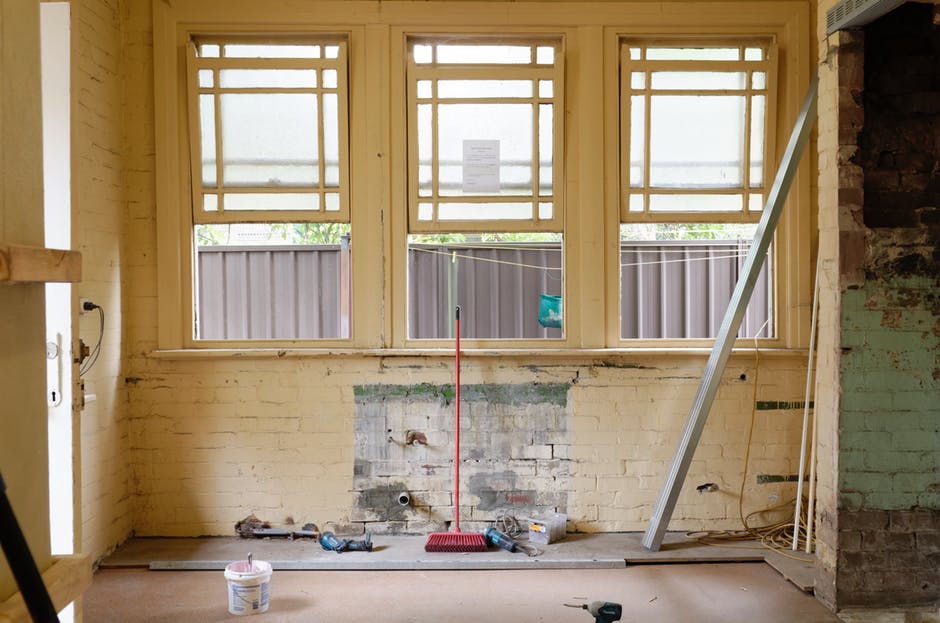 Whether they’re itching for something to do during colder months, motivated by the occasional Saturday when warmer weather prevails, or inspired by a marathon of a favorite DIY show, there always seems to be at least one improvement project on every homeowner’s to-do list. DIY Doubts If you count yourself among that cadre, it might be tempting to cut costs by tackling every task yourself. But, unless you are a veteran do-it-yourself homeowner who’s had a lot of experience with complex and costly renovations, there are probably some projects that should be left to the pros. For instance, most renovations experts say sanding floors requires a special touch that takes lots of practice to develop. So, even if you are able to rent the necessary equipment at a reasonable price, inexperience may lead to ugly mistakes that can be costly to fix. And, while it might be possible for a handy homeowner to complete simple electrical projects, like installing a dimmer switch or replacing a light fixture, the risk of shock and fire outweighs any cost savings for more complicated wiring projects, according to experts quoted in Architectural Digest. Likewise, they recommend that installing bulky or heavy items, like granite countertops, should be left to those who have the tools and techniques to do so without hurting themselves or the materials they are working with. Easy Upgrades Still, there are plenty of projects that even novice DIY homeowners can handle with a minimal investment of time and money. For instance, you could install new cabinet hardware and faucets in the kitchen and bath to give the rooms an almost instant cosmetic upgrade. A fresh coat of paint on walls, cabinets, or even a single wall offers much the same effect. And, while you’re at it, consider replacing dingy switch plates and outlet covers to create a clean look throughout your home. Projects to improve energy efficiency also offer an excellent return on investment, with many resulting in savings right away. For instance, adding weatherstripping around doors and windows and installing a programmable thermostat can help you control heating and cooling costs. Replacing conventional light bulbs with environmentally-friendly LED bulbs can cut energy usage and save you time and trouble over the long haul, because they don’t need to be replaced as often. Plus, your local utility company might offer rebates and discounts to help you cover the costs of some of these items. Staying Safe Even easy do-it-yourself tasks can present some risks and challenges. After all, you may need to mount a ladder to repaint a room or replace a light bulb. And, while a power drill can come in handy for everyday projects like installing a towel rack or hanging pictures on a wall, it can also create homeowner hazards. Before you begin any project, experts recommend that you keep these safety tips in mind: ●Wear the right clothes. Avoid wearing jewelry, loose clothing, or shirts with loose or long sleeves that could get caught in equipment. Be sure to wear goggles when you might be exposed to airborne debris, and use earplugs when operating noisy equipment. ●Prep your workspace. For safety’s sake, you need to have a clear work area. Make sure you remove all clutter from the floor and any other spaces you’ll be working in, such as the front or back yard. If you’re doing a major project that spans multiple rooms for longer than a week, you’d be wise to move any belongings that will be in the way to an inexpensive storage unit until the work is complete. ●Practice precautions when using power tools. For instance, you should never leave a power tool unattended while it is on. In fact, before you leave your work area, unplug any tools and make sure they are out of children’s reach. Follow the owner’s manuals and any warnings when using, caring for, and storing power tools to ensure they’ll work safely for years to come. ●Keep an eye on your surroundings. Be conscious of sharp objects, power tools, and other equipment in your workspace. Remain aware of other adults who enter your area, and keep children and pets out of the vicinity while you work. ●Mind your ladder. Read and follow instruction labels before using the ladder, and make sure you’re using the right ladder for the job. For instance, it’s important to select a ladder that’s tall enough for you to comfortably access the project area and that can bear the weight of you and your equipment, according to its stated weight limits. Finally, be sure to place the bottom one foot from the surface it’s leaning against for every four feet in ladder height. ●Have easy access to a first-aid kit, and make sure it is well stocked. You won’t want to treat serious injuries yourself, but scrapes, scratches, bumps, and bruises are common even during successful renovation projects. ●Mind your ladder. Read and follow instruction labels before using the ladder, and make sure you’re using the right ladder for the job. For instance, it’s important to select a ladder that’s tall enough for you to comfortably access the project area and that can bear the weight of you and your equipment, according to its stated weight limits. Finally, be sure to place the bottom one foot from the surface it’s leaning against for every four feet in ladder height. Following these suggestions about tasks you should leave to professionals, manageable DIY projects, and safety precautions will hopefully help keep both you and your home in good working order for a long time to come. |
Clark Real Estate
305 W. Moana Ste C Reno, NV 89509 (775) 828-3355 Reno Property Management
All
|



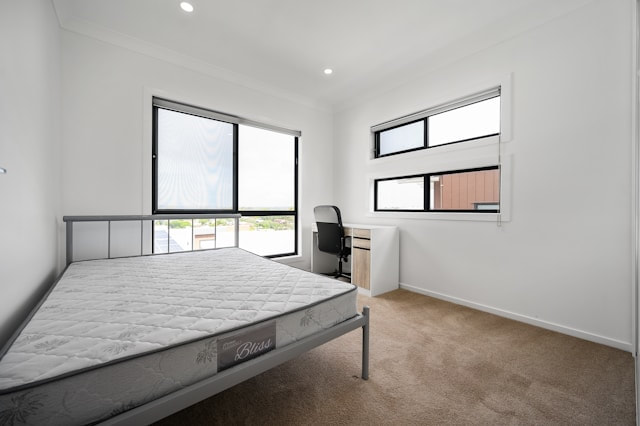
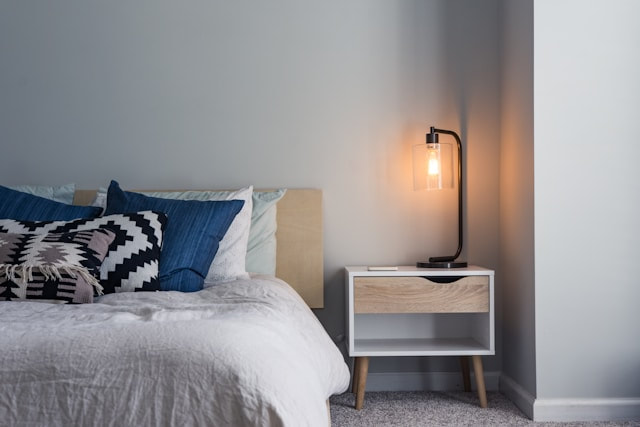
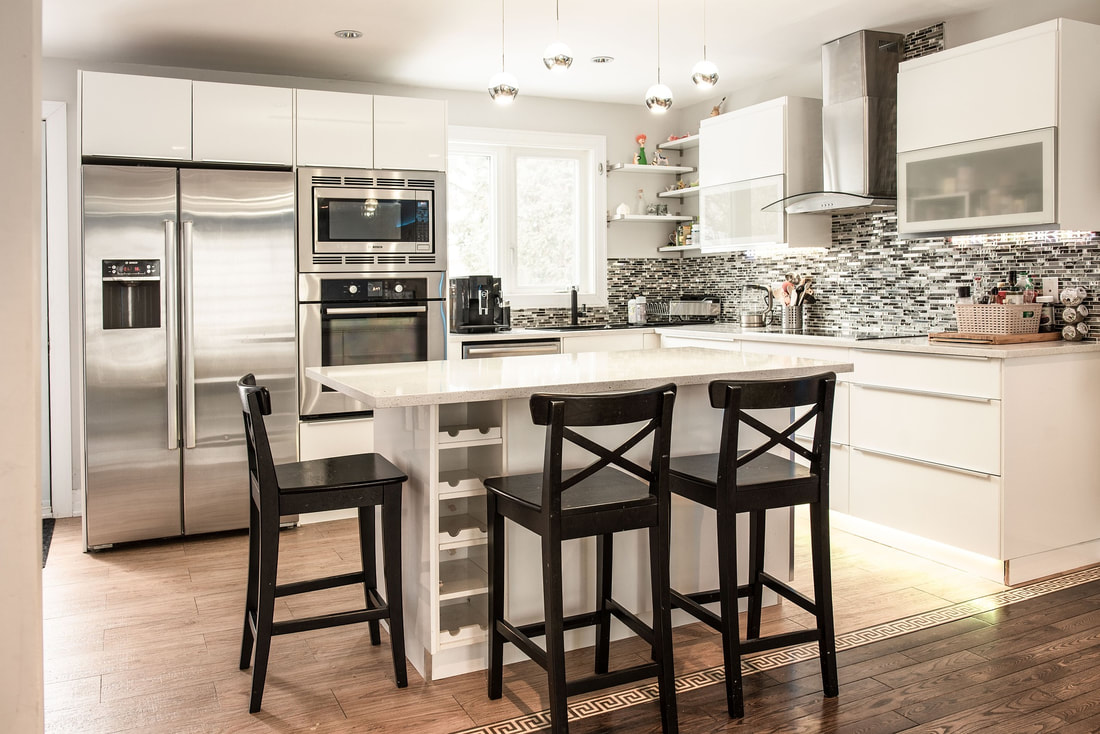

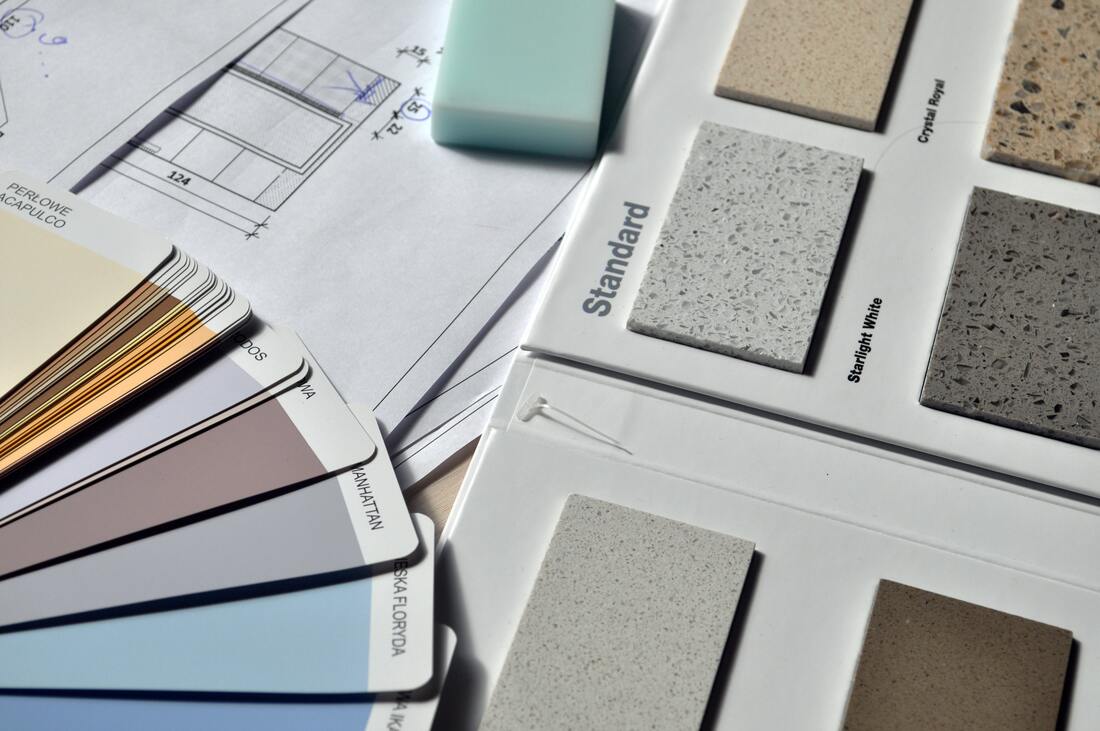
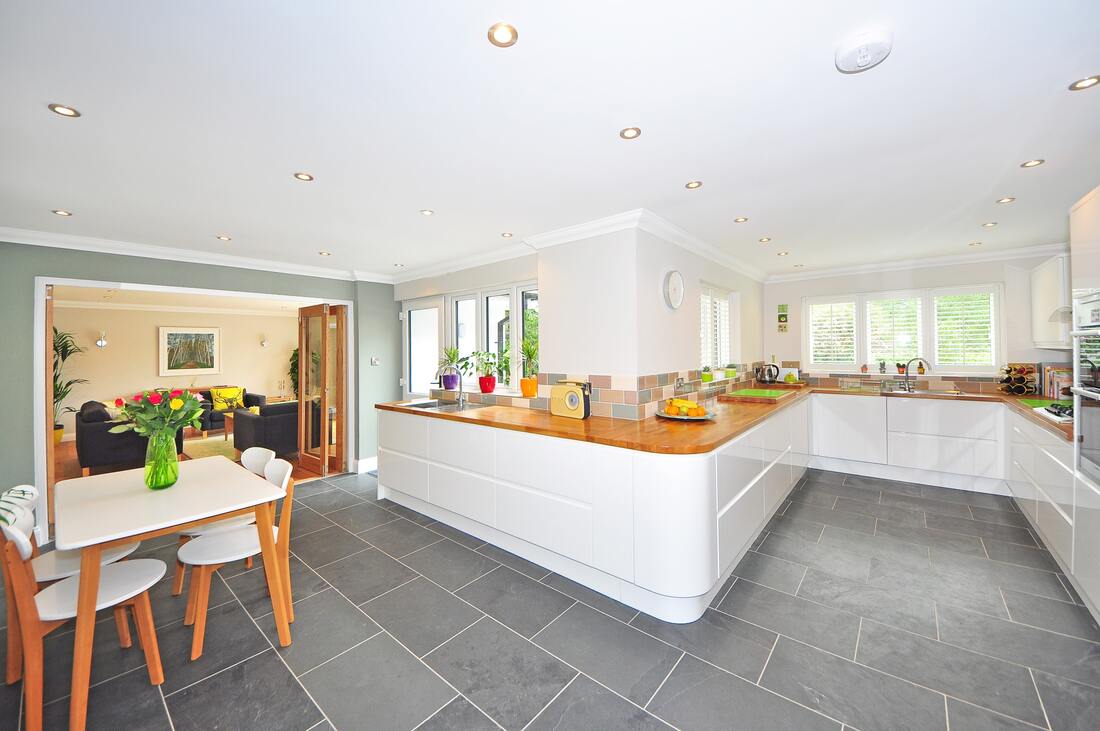
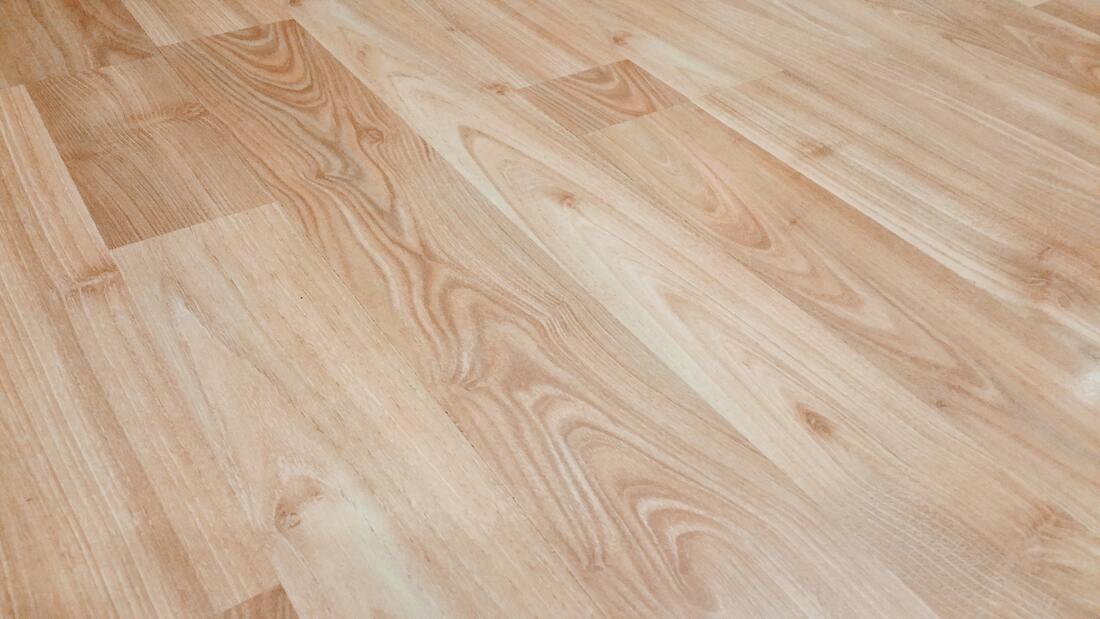




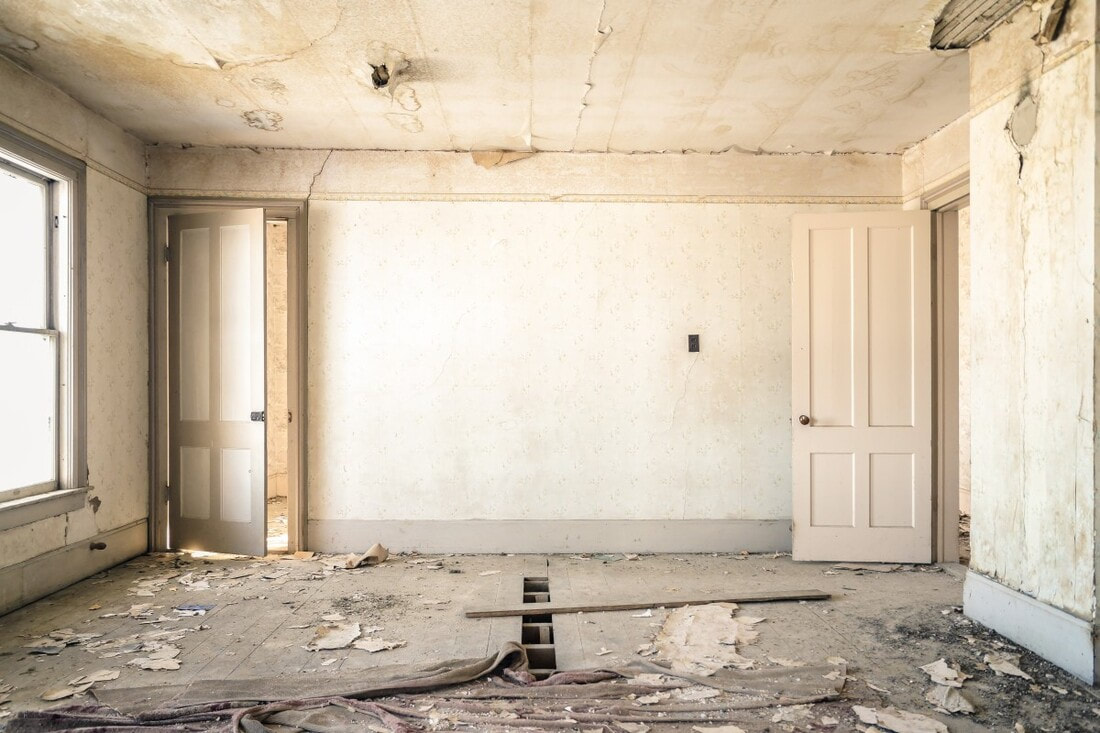


 RSS Feed
RSS Feed

